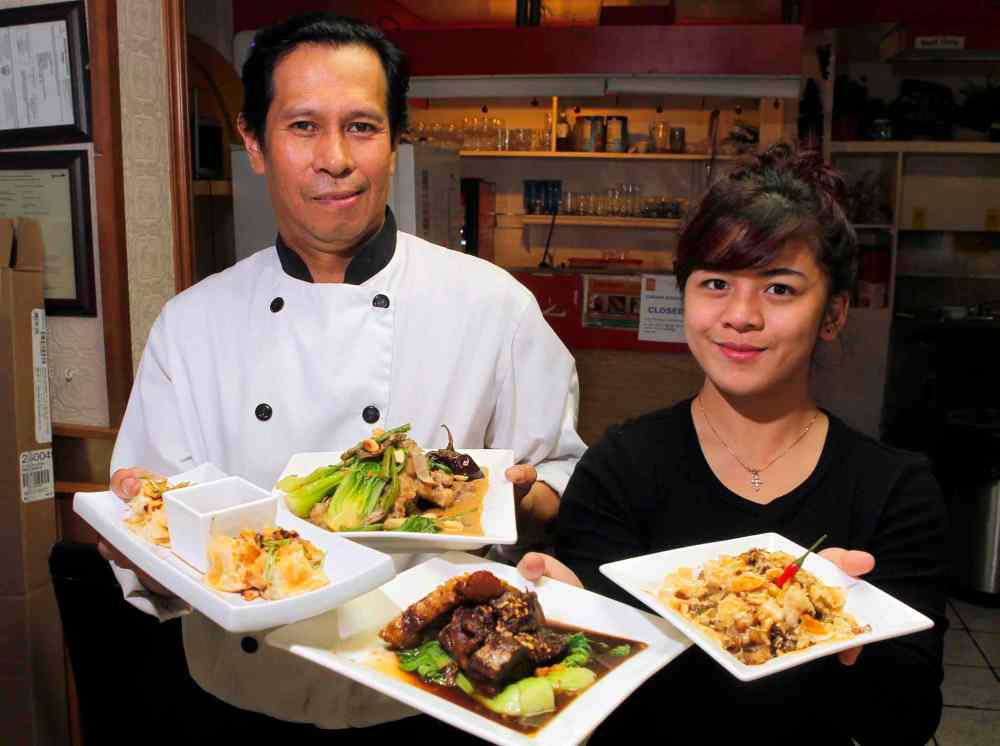Jeepney may look less than vivid, but outstanding Filipino food a feast
Advertisement
Read this article for free:
or
Already have an account? Log in here »
To continue reading, please subscribe:
Monthly Digital Subscription
$0 for the first 4 weeks*
- Enjoy unlimited reading on winnipegfreepress.com
- Read the E-Edition, our digital replica newspaper
- Access News Break, our award-winning app
- Play interactive puzzles
*No charge for 4 weeks then price increases to the regular rate of $19.00 plus GST every four weeks. Offer available to new and qualified returning subscribers only. Cancel any time.
Monthly Digital Subscription
$4.75/week*
- Enjoy unlimited reading on winnipegfreepress.com
- Read the E-Edition, our digital replica newspaper
- Access News Break, our award-winning app
- Play interactive puzzles
*Billed as $19 plus GST every four weeks. Cancel any time.
To continue reading, please subscribe:
Add Free Press access to your Brandon Sun subscription for only an additional
$1 for the first 4 weeks*
*Your next subscription payment will increase by $1.00 and you will be charged $16.99 plus GST for four weeks. After four weeks, your payment will increase to $23.99 plus GST every four weeks.
Read unlimited articles for free today:
or
Already have an account? Log in here »
Hey there, time traveller!
This article was published 19/08/2015 (3732 days ago), so information in it may no longer be current.
Jeepneys are the vibrantly decorated, cramped means of public transportation in the Philippines originally made from Second World War army jeeps. Jeepney, the restaurant, is far less vivid than its namesake. It’s quite spare, in fact, with only a few spots of colour in a huge Portuguese-style picture (left over, no doubt, from one of two previous tenants) and a few tiny prints of jeepneys.
Filipino food is usually good wherever I have it, even though most of it has come from steam tables. Jeepney is one of the rare exceptions where you can order from a menu and the food will be brought to the table.
Two of the starters were outstanding ($6.50 to $7.25). This was my first sisig, but it won’t be my last. Apparently there are hot sisigs, but ours was a cool, juicy scramble of chopped pork cheeks, liver, onions and red and green chilies, plus some pork cracklings, moistened by a citrusy soy-based sauce, with little dabs of mayonnaise.

The other standout was steamed siu mai dumplings, which both resembled and rivalled their Chinese counterparts — a little bigger, with a juicy pork filling in tender, delicate wrappings. Thin, flaky lumpia spring rolls weren’t exceptional, but they were crisp, greaseless and meaty. The only remaining starter (not sampled) is tokwa’t baboy — deep-fried tofu and pork in a sauce of soy and vinegar with onions.
Entrées run from $11.50 to $14.50, on a menu dominated by pork, the belly as often as not. Take the lechon kawali, for instance — deep-fried, chewy strips of pork belly with crackly skin attached. Or Pinoy-style barbecued pork belly with a sweetened soy flavour.
You can have your chicken barbecued or fried. Barbecued is the better choice, a very generous order of big chunks with a lovely charbroiled flavour. The ultra-crunchy, marinated fried chicken, with a rather bland gravy on the side, will easily feed three as a main course — good, but a little too reminiscent of KFC.
Oxtail kare kare is one of the highlights — big, awkward, but luscious chunks on the bone, in a subtle peanut sauce, with a few slices of eggplant, green beans and baby bok choy. With it comes a wonderful gingery, chutney-like pickle of shredded green papaya laced with raisins.
The savoury adobo of pork belly (said to be the national dish of the Philippines) is another top choice, heady with garlic and the salty-sour taste of soy and vinegar. It, too, is cooked with baby bok choy and (like many other entrées) garnished with a refreshing relish of marinated cucumber, tomato and onion.
Others worth trying are the crispy pata of deep-fried pork hock, and the huge, long-simmered beef ribs, garnished with marinated slices of daikon — good on their own, but even better with the terrific tamarind and tomato sauce. A crisply deep-fried, sweet-fleshed whole tilapia, with a less-salty-than-most black bean taubi sauce, was expertly deboned for us at the table.
The special fried rice, with an elusive, almost flowery flavour, contained four big, plump shrimp, as well as bits of pork and a variety of veggies. The rice vermicelli pancit was the only letdown — quite bland and dotted far too sparingly with pork, wee shrimp and veggies.
The leche flan is said to be delicious, but they were sold out on my visits, the cassava cake as well (possibly the choices are better at lunch than at dinner). There is an interesting and not-too-sweet caramel-flavoured drink with big tapioca balls at the bottom.
I didn’t get to it, but parties of six (or four really big eaters) might want to tackle the Boodle Fight ($80) — a massive, multi-item feast, which comes spread on banana leaves. It’s eaten, traditionally, with one’s hands, although utensils will be supplied on request.
I can’t predict the general efficiency of the service, since the restaurant was less than half-full on my visits. However, the young woman who waited on us was charming, knowledgeable and attentive, offering guidance and even steering us to a less-expensive rice dish that was better suited to our entrées than the one we’d chosen. And that doesn’t happen very often.
Jeepney is open from 10 a.m. to 9 p.m. Closed Monday, and during the summer, open for takeout only on Wednesday. Note: cash only.
marion.warhaft@freepress.mb.ca
History
Updated on Wednesday, August 19, 2015 1:20 PM CDT: Adds slideshow

